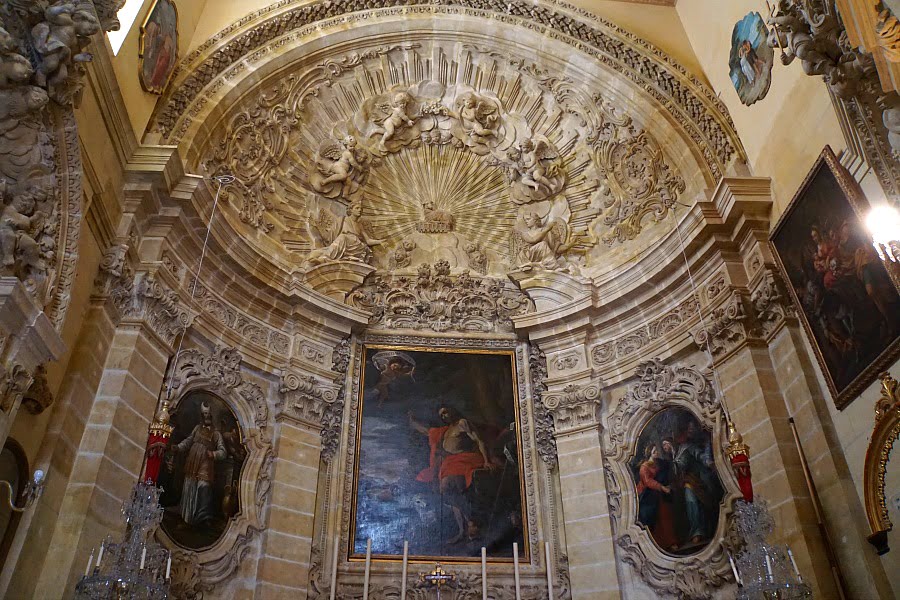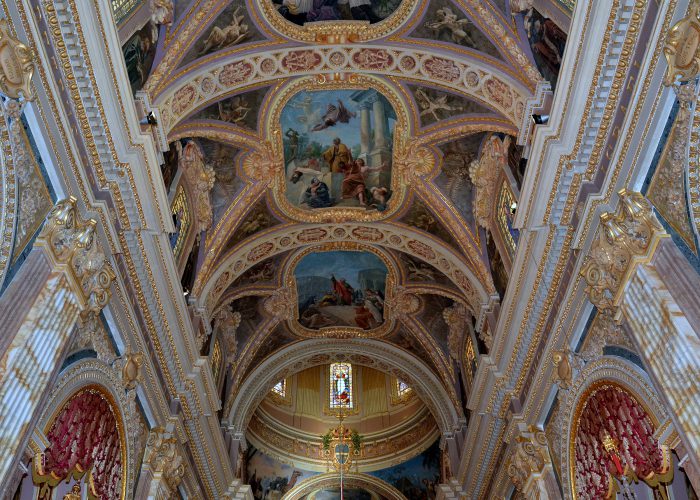Samuel Bugeja - The Restorer
The Restorer
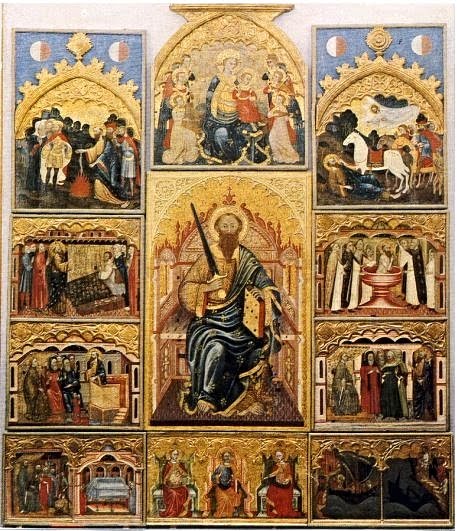

Antonio Sciortino, our most famous Maltese sculptor of world renowned fame specifically engaged my father in 1942 to join the National Museum’s ‘Belle Arti’ section after having seen his work of art at the Naxxar Organ Balcony sculptures. Antonio Sciortino who was also his mentor, triggered off Samuel’s restoration career and later becoming good friends. My father always spoke with enormous high respect and visible emotion every time we mentioned Sciortino.
Perhaps two key scholarships my father won can also be considered as instrumental to many subsequent activities and his unique path. The scholarship studies between 1948 and 1949 at the Leicester School of Art in the United Kingdom provided the distinctive interpretation of his wood carvings in later years. On the other hand, the scholarship studies at the ‘Centro del Restauro’ in Rome, Italy between 1955 and 1956 heralded major restoration activities that varied in technique and complexities. From private collection paintings to the whole Mdina Cathedral ceiling alfresco restoration.
Samuel Bugeja became the reference point for any major and critical art restoration in Malta having gained extensive restoration experience in Rome under the most well respected art restorers Rome could master. This led to some of the most artistic treasure restorations (of great national value) in Malta by my father. The following are the more salient restorations:
1. Mdina St Peter and St Paul Co-Cathedral Apse and Vault – 1958 to 1971;
2. Mdina Museum Polyptych – 1967 – 1971;
3. Mellieha Sanctuary Shrine, Medieval Icon and Chapel ceiling – 1970 to 1986;
4. Nadur (Gozo) Parish Church Vault and Titular – 1972 to 1980;
5. Valletta St Paul’s Shipwreck Apse and side Cupola – 1976 to 1977;
6. Valletta Ta’ Giezu the Miraculous Crucifix – 1979;
7. Valletta St Ursola Klausuri, Mattia Preti painting – 1980;
8. Haz-Zebbug Parish St Philip Titular, Fra Luqa Garnier – 1982;
9. Valletta St Francis Convent, Dome and Vault, Cali – 1982;
10. Valletta Tal-Karmnu (Mount Carmel Church) Titular – 1983;
11. Mdina Chapter Aula Kapitolari, Francesco Zahra – 1986;
12. B’Kara St Helen’s Basilica Dome, Vault and Apse – 1986 to 2000;
13. Rabat (Malta) St Paul’s Church Dome – 1993;
14. Mdina St Peter and St Paul Co-Cathedral Kappella Tal-Kurcifiss (Chapel of the Crusifix) – 2000;
15. Mdina Museum, Flemish School XV Century – 2000;
16. Valletta, St Paul Shipwrecks, Confraternita Della Beata Vergine della Carita’ – 2001.
Besides all the above, volumes of restorations to people with private collections were undertaken. Some extremely valuable by renowned artists.
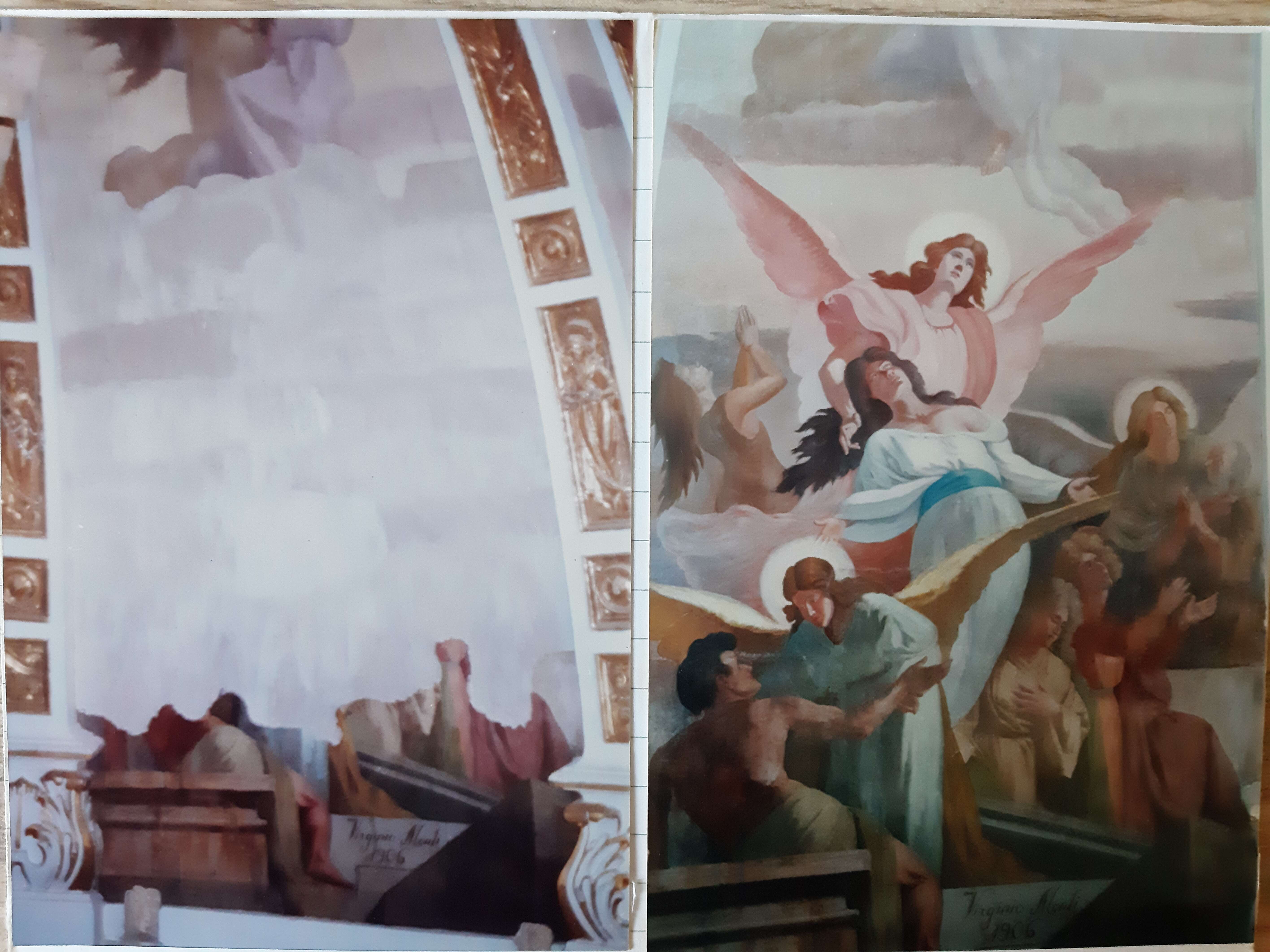
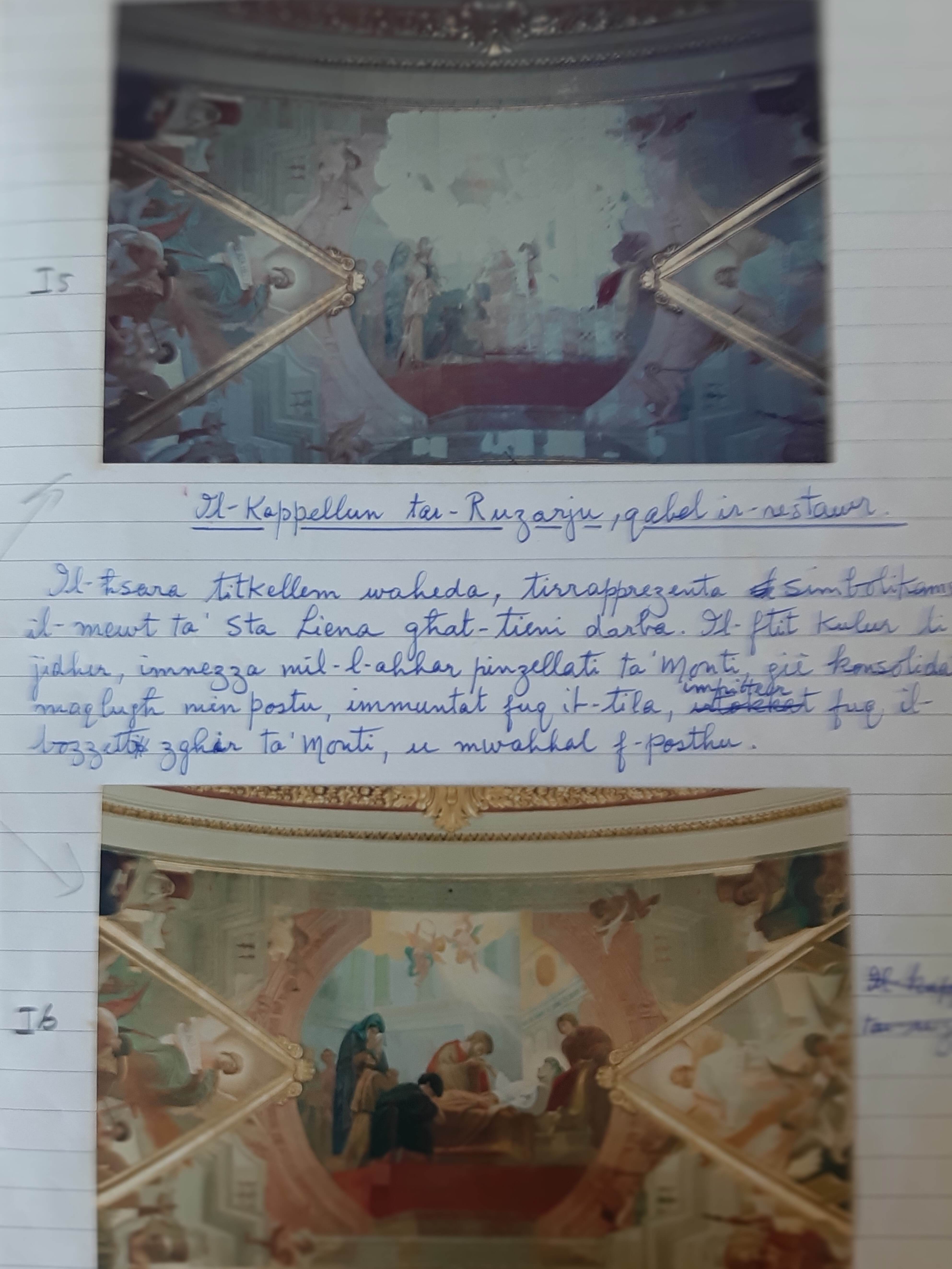
Perhaps it is now appropriate to provide a brief sequence of my father’s career that better explains why Samuel Bugeja was engaged in so many restorations projects.
1. Samuel Bugeja was born in Rabat, Malta in 1920. Son of Adam and Guza;
2. From 1934 was trained in wood sculpture in his Father’s Adam ‘bottega’ (together with Benjamin Tonna);
3. Under Carmelo Tonna, from 1934 Samuel Bugeja studied ornamental drawing designs;
4. From 1935 onwards and still at the tender age of just 15 years old, my father was a leading student being taught by none other than E. Caruana Dingli (design), V. Apap (design), A Micallef (modelling) and C. Cassar Attard (History of Art);
5. From 1935 to 1939, my father assisted his Father Adam in various sculptures across many Churches;
6. Between 1939 and 1942 and at this amazingly young tender age of eighteen, my father completed the beautiful wood carvings of the Organ Balcony of the Naxxar Paris Church. The remarkable expressions of the Angel faces are truly inspiring;
7. Various works were completed in the Lija Parish church;
8. The period between 1942 and 1948 was an instrumental one:
a. My father started his restoration training with the National Museum’s ‘Bella Arti’ section. Engaged by the great Antonio Sciortino himself in 1942;
b. Was chosen by the School of Art for a scholarship in wood carving following an open competition whereby my father came first in all three sections, namely, design, sculpture and History of Art.
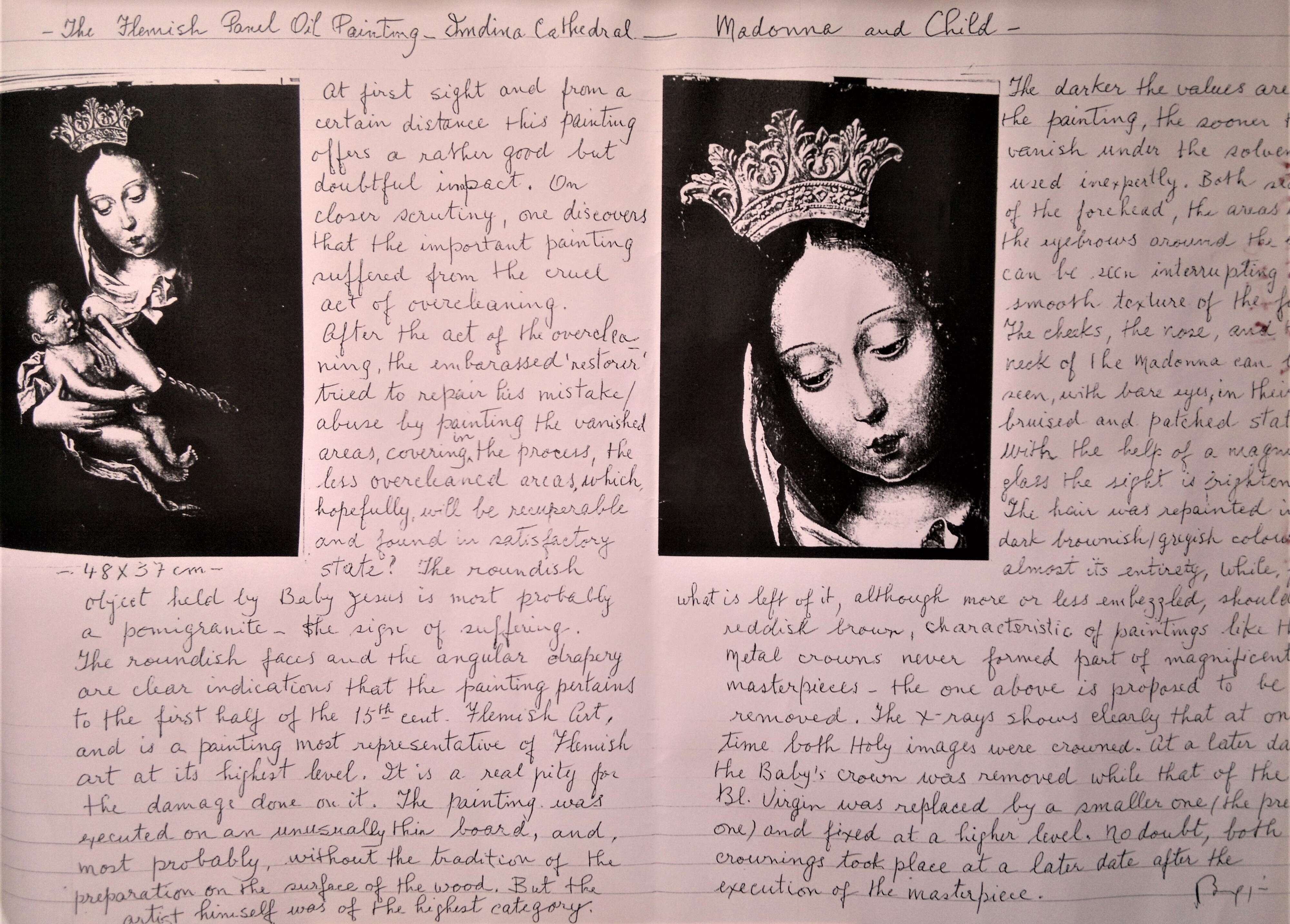
9. Chosen by A. Sciortino and under his mentorship, my father was given specific painting and sculpture restoration works, some of which were the following:
a. The painting of Mattia Preti (Martyr of St Catherine) in the Parish Church of St Catherine in Valletta;
b. The painting of Paladini (St James) in the St James Parish Church in Valletta;
c. The painting of Erardi (Nativity) in the Valletta Co-Cathedral;
d. The main altar painting of Mattia Preti at the Floriana Parish Church.
10. In 1949 my father attended the advanced studies at the Leicester College of Arts, Science and Technology in the United Kingdom;
11. Between 1950 and 1954 some of the more salient engagements were:
a. Various continuous restoration works through the National Museum section of ‘Belle Arti’;
b. Sculpture in wood and bronze for the pulpit at Stella Maris church in Sliema;
c. Model for the main alter at the St Philip Parish church Zebbug, Malta.
12. The period between 1955 and 1957 proved to be yet another major milestone for my father, namely:
a. Was chosen by Government to accompany the most famous ‘beheading of St John’ painting by Caravaggio at St John’s Co-Cathedral to Rome. This was a major responsibility as my father worked on the restoration together with the most leading experts at the Rome ‘Centro Del Restauro’;
b. During this fundamental period, my father was fully updated and exposed to the very latest restoration techniques Rome could offer;
c. Samuel was also given restoration assignments by the ‘Centro Del restauro’, these being:
i. The Polyptych created by the School of Sieneis Duccio di Boninsegn;
ii. The fresco at the Foro Romano;
iii. The frescoes at the Church of St Peter and St Paul of Masolino;
iv. The frescoes at the Church of Aracoeli of Pentoricchio;
v. A number of other restorations across Rome.
d. This period also allowed my father to attend further studies in Rome. This was focused on wood carving and sculptures.
13. In 1958, on the recommendation of the internationally well-known Profs. Cesare Brandi, my father was given the task to initiate the restoration work of the Mdina Cathedral frescoes;
14. In 1959 under the recommendation of Profs. Brandi, my father was given the responsibility for the wooden sculpture and decoration restoration of the National Manuel Theatre, Valletta;
15. Also in 1959, my father won a competition that was evaluated by Italian experts in Rome. This was for the design of the pedestal and ‘bankun’ for the Gozo Cathedral. This is a feast of art, a monument to the capabilities of an amazing artist.
When one starts to assimilate this rich history and extended international exposure my father gained, it becomes no surprise that he became the leading expert in art restorations in Malta.
